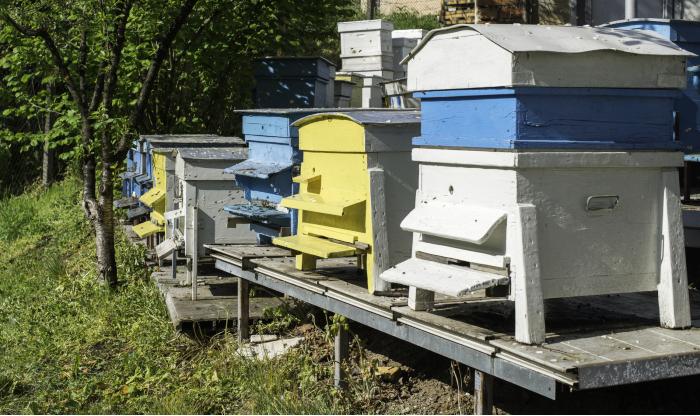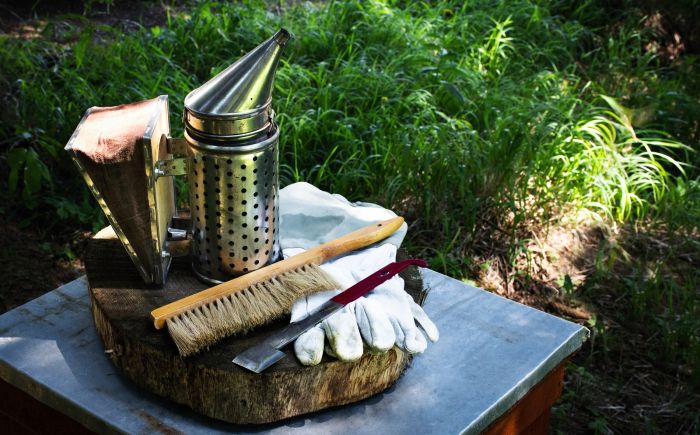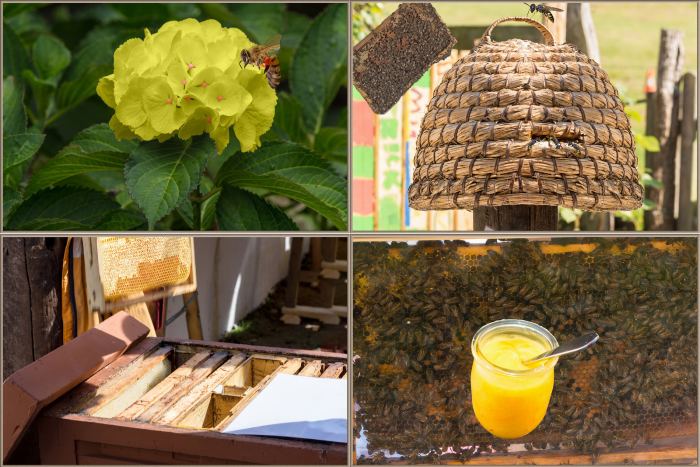If you want to broaden your outdoor activity horizons, beekeeping is the way to go.
When you start beekeeping for beginners, you won’t only enjoy the advantages of fresh backyard-to-table honey, but you can also enjoy the pleasure of managing your own colony.
Plus, the buzzy creatures have the capacity to pollinate your plants, which is a great help when it comes to keeping your garden looking beautiful. It’s a real win-win situation.
The idea of beekeeping is an appealing one, but before you rush off to get started, keep in mind that there is a steep learning curve to put in place and get right before effectively operating your own first-time hives.
To begin with, you’ll need a few essential bits of beekeeping equipment such as a protective beekeeper suit and cap, plus plenty more besides.
Therefore, this guide should serve as a helper to get you in the right place to start your exciting new hobby; read on to find out more about beekeeping for beginners.
What Should You Know About Bees?
A honeybee colony will contain 30,000-50,000 bees on average, depending on size.
The queen (who produces up to 1,500 eggs per day), worker bees who manage the hive, and drones, which are male bees that mate with queens from neighbouring colonies, all reside in one society.
Understanding bee biology is critical for all novices, which is why it can be useful to find yourself a local beekeeping course.
Enrol on that before you buy any hives, bees, or equipment, and really get a taste of what bees are all about. Make sure the course is taught by an experienced, well-respected person who has plenty of experience when it comes to bees.
If you can do this, you’ll learn the fundamentals, such as appropriate terminology, equipment usage, and how to manage bees seasonally.
What Equipment Do You Need?

Ready for some good news? Beekeeping, perhaps surprisingly, isn’t an expensive hobby to start.
Sure, there is an initial outlay required that WILL cost you, but you can get started with a budget of around £200-£300 for the basic kit, then add on more advanced bits of kit as you go.
Here are some of the key bits of equipment you’ll need to consider buying as a new beekeeper:
Woodenware:
This is what makes up the beehive and includes the hive bottom, body, and top cover.
It’s often best to start with two hives or colonies so you can compare them to see what works and what doesn’t.
It’s like an experiment, giving you the perfect opportunity to determine exactly how your own beekeeping methods and what you want to get out of the whole thing work together, and what you need to do.
Protective veil and gloves:
Inexperienced beekeepers should avoid stings at all costs. No one likes to be stung by a bee, but it’s even more important not to get hurt when the creatures are your hobby.
Firstly, as we all know, when a bee stings, it will die. Even if you have many thousands of bees in your hives, losing a handful each time you go near them isn’t a good thing to have happen.
Plus, bee stings are painful and can be dangerous if you are allergic. Even those who don’t have an allergy to bee stings can develop one if they are stung too many times.
The real problem is the damage one small bee sting can cause.
Imagine you are near your hive, not wearing any protective clothing. You are holding a frame or opening a hive, then you get stung. You could knock something over, or drop something, and cause all kinds of issues.
It’s just best to wear protective clothing no matter what.
Smoker:
This calms and distracts the bees while you operate within the hive. Again, it’s a safety measure that will help you make the most of your hobby, and protect you and the bees.
Hive tool:
Like an extended paint scraper, this must-have enables you to quickly enter the hive and shift frames around.
Bees:
Once again, purchase enough for two colonies.
Where Should I Get Bees From?
On the point of buying the bees themselves, you can usually replenish your hives in one of two ways. Perhaps the easiest is to literally buy bees online.
It might seem strange, and certainly wouldn’t be the first thing that most people assume would be possible. However, you can find a variety of websites that will send you a package that consists of a tiny screen box containing about 10,000 loose bees.
The queen, who is usually unrelated to the other honeybees, is usually kept apart in a cage.
You can, however, purchase a nucleus colony if you prefer. This is basically a tiny colony, and each one already has an active queen and five frames of comb.
Nucleus colonies are usually more expensive than the standard packages mentioned above, but they are roughly six weeks ahead in growth. If you want to get off to a fast start, this might be the better way to go about it.
What Are The Costs Associated With Beekeeping?

Really, the costs associated with beekeeping for beginners are as much or as little as you want to spend.
If you search around for the protective clothing, for example, you can find some excellent second-hand items, or bargain prices, saving yourself some money right at the start.
Or you could spend more for better quality and know that what you’re buying is going to last for many years. It will depend on your budget.
It’s possible to buy an entire beekeeping starter kit for around £200-£300.
But if you want to get higher quality items that will last long, you’ll probably need to spend at least double that, and possibly triple. Remember, once everything is set up, the only thing you’ll need to pay out for is bees.
What Is The Time Commitment?
You receive out of beekeeping what you put in, just like any other activity.
Overall, it’s recommended you allocate one hour per week to manage your bees for every two hives.
However, certain seasons will be busier than others. Spring will be busier, for example, as this is when the bees start to grow and develop. In the summer you won’t need to do very much at all.
Where Should The Hives Go?
It’s best to face the entrance of each hive in either the south, east, or southeast direction for the optimum location.
In this manner, bees can soak up the morning sun (which gets them up and moving about) and then cool down in the afternoon shade.
Avoid any high-activity backyard hotspots, such as walkways or climbing frames, or patio areas. And, of course, place the hives in a readily accessible location for your beekeeping convenience.
Some allotments will make provisions to allow for beehives should you not have a suitable space in your garden.
When Should You Start?

The answer varies depending on climate and location, but a rough time frame would be something like the following.
First and foremost: In the autumn or winter, enrol in a beekeeping lesson (around November or December). Order your bees and equipment just after that.
When your bees arrive in the spring (usually around April), you’ll install your hive and spend the following 3 to 4 months feeding them a sugar-water mixture.
After that, when your colony has grown enough (and is doing well), you may harvest honey in the autumn time.
The bees will then be retired, ready for the colder months ahead, starting in November.
When you do this, you should lock them up, protect them from wind, make sure they’re ventilated so there aren’t any moisture issues inside the colony, and then leave the hive alone between December and February.
Having said that, keep an eye on the bees to ensure they have enough honey stores. Finally, when spring returns, the process can all be resumed.
Why Would A Bee Colony Die?
Prepare to face the harsh reality: there’s a good possibility your bees will die the first time (even the first few times) you establish a colony.
There is a high failure rate, especially in the first two or three years.
True, the process requires prior expertise and dedication, but don’t quit too soon. In fact, beekeeping errors aren’t the sole cause of hive mortality; pests, especially mites, can also cause a lot of damage to the hives and destroy the colony.
Whatever you do, you should keep studying, educating yourself, joining beekeeping organisations, being alert, and being prepared to fail.
It is not whether or not your bees survive or produce honey that determines your success as a beekeeper; it is what you learn from those bees that does it.

